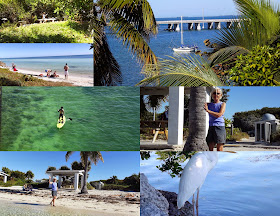Boot Key Harbor, Marathon, Florida
In recent years I've become increasingly aware of the dual populations of land birds versus sea birds.
When we first moved onto the boat, it never occurred to me that we would be so cut off from the sights and sounds of song birds. Nor had I ever stopped to think that no sea birds (as far as we know) are song birds. Upon reflection, I suppose there is a reason. In woods, separated birds can not see each other. They need the songs to locate fellow members of their species. Over the water, songs aren't needed nor are they effective.
I mostly miss the call of my favorite; the mourning dove. Our friend Mari doesn't like mourning doves, but Libby and I do. Hearing that sound in dawn's first hour is very soothing.
But on the boat, we see and hear only sea birds. That not only applies on the ocean, but even on Lake Champlain.
My least favorite water bird is the duck. They QUACK QUACK loudly all night long. Frequently the quacking ruckus is due to duck rapes. Did you know that rape is the only form of reproduction for ducks? When we witness it during the day, the violence is scary. It is not uncommon for the female to drown in the attempt.
Osprey are the water birds we most admire. Their skills at flying and fishing are truly awe inspiring.
But the ones most fun to watch are pelicans. They look stately when sitting still on a post. They patrol the sky flying formation in squadrons. They dive bomb fish from above in startlingly swift attacks. We've seen the dive attacks from above the surface and from below. They are spectacular. Unfortunately for the pelicans, the dives addle their brains. Pelicans become "punch drunk" and die early because of the brain damage.
During our migrations, we have learned that certain spots are favorite hangouts for pelicans. Year after year, there will be a flock of pelicans in exactly the same places. Usually, the size of the flock is invariant, as well as the white/brown racial divide of pelican species. We also see that even when whites and browns live alongside for many years, that it is true;
birds of a feather flock together.
All the pictures below are best enjoyed by clicking on the picture to see it full screen.
In the long wide picture below, you can see about 6 brown pelicans on the left side. Every year, the browns are on the left side. That flock lives near Amelia Island in northern Florida.
 |
| This flock lives near Matanzas Inlet |
 |
| This island at the south end of Daytona Beach is always covered with pelicans. |
 |
| CLose up of the island above |




